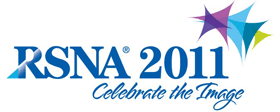
Abstract Archives of the RSNA, 2011
SST14-03
Percutaneous Gastrostomy Tubes in Patients with Pierre Robin Sequence (PRS): Efficacy, Maintenance, and Complications
Scientific Formal (Paper) Presentations
Presented on December 2, 2011
Presented as part of SST14: Pediatrics (Interventional)
Arvind Kaur Shergill MBBS, Presenter: Nothing to Disclose
Hyder Al-Attar BS, , Abstract Co-Author: Nothing to Disclose
Nicole E. Brown BS, Abstract Co-Author: Nothing to Disclose
Cindy Guernsey, Abstract Co-Author: Nothing to Disclose
David Fisher, Abstract Co-Author: Nothing to Disclose
Bairbre Louise Connolly MD, Abstract Co-Author: Nothing to Disclose
Michael John Temple MD, Abstract Co-Author: Nothing to Disclose
Philip John MBChB, FRCR, Abstract Co-Author: Nothing to Disclose
Joao Guilherme Amaral MD, Abstract Co-Author: Nothing to Disclose
Dimitri Alejandro Parra MD, Abstract Co-Author: Nothing to Disclose
Joanne Nijhius, Abstract Co-Author: Nothing to Disclose
Children with isolated Pierre Robin Syndrome (iPRS) have significant oropharyngeal abnormalities which resolve with age, growth or surgery. PRS can be associated with complex co-morbidities: (PRS plus: pPRS). PRS is associated with feeding and respiratory difficulties. Gastrostomy tubes (GT) provide an alternative means for nutrition until patients are able to feed orally. The purpose of the study is to evaluate the safety, efficacy, maintenance, complications and dwell times of percutaneous image guided retrograde GT insertion in children with PRS.
120 children with PRS were identified between January 1996 and December 2009, 40 of whom were referred for GT insertion. We retrospectively reviewed 37/40 (18 Males, 19 Females); 3 were excluded because of no follow up. Demographic data, feeding methods, procedural details, complications and maintenance procedures were recorded. Data was collected at three time periods: 1) prior to GT insertion, 2) at, and 3) at GT removal.
Prior to GT insertion: 32 infants were term with a mean weight of 3 kg (1.3 - 4.1 kg) and 5 preterm; 16/37 patients were ≤ 10th weight percentile.
At GT insertion: Mean age was 66 days (7-167 days), mean weight was 4.4kg (1.1-7.0kg); 19 had dropped ≥ 10 weight percentiles; 12 had zero intake by mouth. 2 /37 were intubated for the procedure. 37 GTs were successfully placed in 37 patients, with 5 minor technical issues: pneumoperitoneum (3), >1 puncture attempts (1) and broken retention suture (1). There were no major and 8 minor complications (2 transient respiratory distress, 6 site infections).
At GT removal: The mean dwell time for GT was 1.78 years. Patients required an average of 2 maintenance procedures /patient, and approximately 4 tube changes/1,000 tube days. At time of GT removal, weight was available in 27 patients, of whom 70% had maintained or increased their centiles. There was no correlation between weight gain and iPRS/pPRS.
GT in PRS is associated with high technical success rate, low complication rate, and provides a safe method for nutrition until patients are able to feed adequately by mouth. Mean dwell time was 1.78 years.
This review provides clinically useful information (safety, maintenance, dwell times etc.) for parents and professionals when considering the choice of percutaneous GT placement for children with PRS.
Shergill, A,
Al-Attar, H,
Brown, N,
Guernsey, C,
Fisher, D,
Connolly, B,
Temple, M,
John, P,
Amaral, J,
Parra, D,
Nijhius, J,
Percutaneous Gastrostomy Tubes in Patients with Pierre Robin Sequence (PRS): Efficacy, Maintenance, and Complications. Radiological Society of North America 2011 Scientific Assembly and Annual Meeting, November 26 - December 2, 2011 ,Chicago IL.
http://archive.rsna.org/2011/11006368.html

